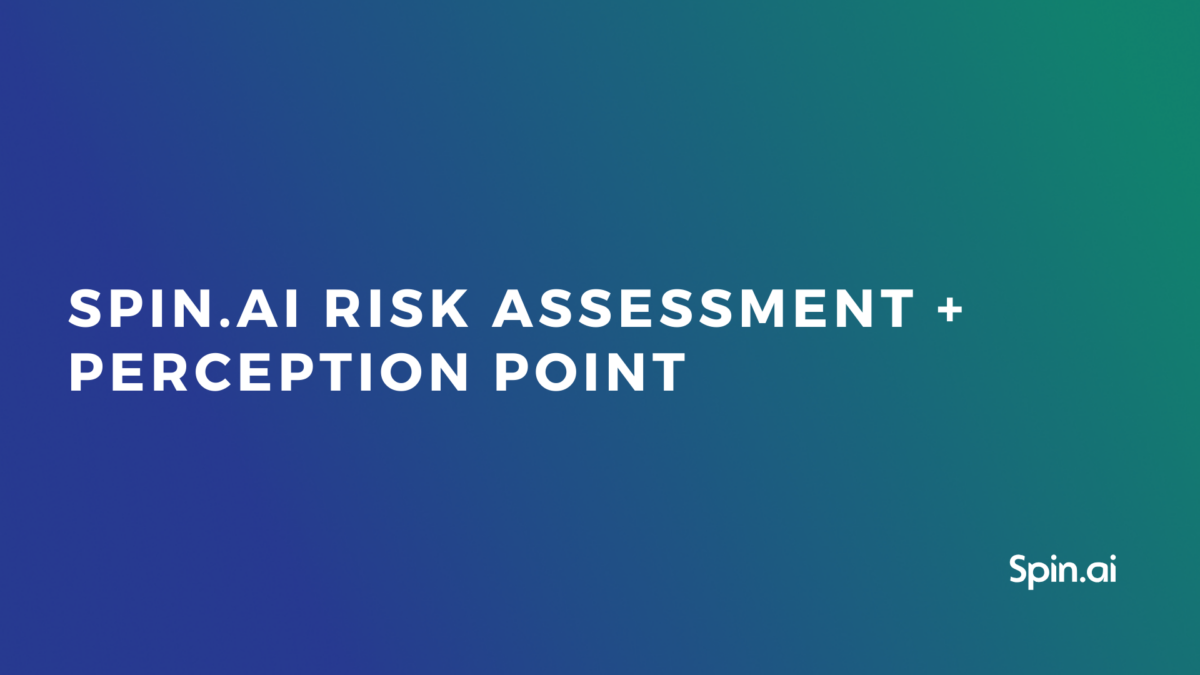5 Biggest Cloud Computing Risks & How to Liquidate Them

There is no question that businesses today are either currently migrating or looking to migrate to the public cloud. But while public cloud SaaS offerings provide tremendous benefits and functionality, there are also cloud computing risks must be handled, otherwise, they may result in security breaches, downtime, and other troubles.
Those who migrate often struggle to adapt their operations, processes, and management procedures to public cloud environments. Additionally, challenges in the way of cloud security concerns, data protection, and compliance can create roadblocks for businesses that want to switch to the cloud.
What are the cloud computing security risks and how can businesses today fight them? Let’s take a closer look at some of these cloud security risks as well as how SpinOne helps enterprises and small-to-enterprise environments today in the public cloud.
5 Biggest Cloud Computing Risks
While public cloud Software-as-a-Service presents tremendous benefits to organizations today, businesses often face various struggles with realizing the potential value from public cloud environments due to numerous factors. These include:
- High costs due to operational burden
- Management complexity
- Security concerns
- Compliance challenges
- Data Loss and Data Leak Protection challenges
Let’s specify how do each of these mentioned cloud challenges and security issues create hurdles for Microsoft 365 and G Suite users.
High Costs Due to Operational Burden
Operational and “day 2” tasks in the public cloud can create challenges for organizations coming from a primarily on-premises-centric infrastructure configuration. The tools and processes for managing public cloud environments are vastly different than on-premises.
Additionally, organizations may lack the feature set and tooling they are accustomed to when managing critical components of public cloud such as security, compliance, and backups.
Common struggle organizations find with public cloud is the often-disjointed set of native tools provided by cloud vendors when managing G Suite and Microsoft 365 environments. These challenges create operational overhead for organizations managing their G Suite or Microsoft 365 SaaS environments.
The lack of seamless tooling leads to additional operational overhead for businesses managing their SaaS offerings and detracts from the overall value of the Software-as-a-Service offerings being consumed.
Complex, Disjointed, and Difficult to Manage
The native tools that are provided by public cloud vendors are often complex, disjointed, and difficult to manage. Often, various public cloud tools have their own dashboards and interfaces aside from the SaaS environment itself. This creates disjointed management flows that can add to the operational burden for businesses.
It also can lead to critical events related to security, compliance, and other operational matters being overlooked due to lack of visibility. This creates additional complexity to the management plane.
Since security and compliance are top priorities for companies today, these management hurdles can lead to a very concerning stance when looking at managing public cloud environments effectively, efficiently, and securely.
Read more on How to Develop an Effective Cloud Strategy
Security Concerns in Cloud Computing

As more and more businesses are utilizing the public cloud, it has certainly become a target for threat actors. Security concerns are arguably among the most important concerns facing businesses today that are utilizing technology solutions for operations. Attackers are continually targeting sensitive data as well as looking for ways to compromise security measures in place. To address these concerns effectively, businesses should implement robust security monitoring practices.
An additional challenge for businesses is the tooling and features offered in the way of compliance and security by both Microsoft 365 and G Suite are determined by the SaaS subscription level. Let’s consider this aspect.
When looking at the Security & Compliance Center availability for Business and Enterprise plans, only the very basic security offering provided in Microsoft 365 is available across all subscription levels. Examining the features of Microsoft 365 Security & Compliance Center as documented by Microsoft, we find the following features are only available in the top tier subscription levels:
- Cloud App Security
- Advanced Threat Management
- Data loss prevention for Exchange Online, SharePoint Online, and OneDrive for Business
- Data loss prevention for Microsoft Teams chat and channel conversations
- Advanced data governance
- eDiscovery export holds, and advanced eDiscovery
- Manual retention, deletion policies
Without the top-tier subscription level in Microsoft 365, the security features provided are basic at best.
Google’s G Suite offering in terms of security features is very similar in structure to Microsoft 365. The Google Security Center is only included in the G Suite Enterprise edition. Without G Suite Enterprise, the following additional security benefits are not available to the lower-level subscription tiers.
- Advanced-Data Loss Prevention for Gmail and Drive
- Cloud Identity Premium
- S/MIME Encryption
- Vault retention that holds exported data (Business and Enterprise only)
- Robust audit logs to analyze usage (Business and Enterprise only)
- Organization unit level controls for Drive (Business and Enterprise only)
- Custom admin alerts (Business and Enterprise only)
- eDiscovery on Drive files (Business and Enterprise only)
Without the additional security features included in the upper-tier offerings, organizations will only have access to basic security mechanisms in their SaaS environment. This means, your data won’t be fully protected.
Organizations may feel forced to overprovision their Microsoft 365 or G Suite subscription level or buy these as additional add-ons simply to help meet the security and compliance challenges they face in public cloud SaaS. This certainly offsets much of the perceived value of the public cloud.
Read also: Cloud Data Security and Compliance Best Practices
Public Cloud Compliance Regulation Challenges
One of the tremendous challenges facing businesses today is compliance. New and often complex and difficult-to-implement compliance challenges are demanded on a regular basis.
When thinking back to 2018, the new General Data Protection Regulation or GDPR has added a tremendous challenge to businesses to protect and secure customer data. The complexity and challenge to properly enforcing and ensuring compliance in the public cloud can be difficult.
With business and customer data in the public cloud, it can be more difficult to have visibility and control over data entering and leaving the environment. By their nature and design, public cloud services are accessible from any number of end-user devices and networks. Additionally, as is found with the security offerings, many of the data loss protection features and compliance functionality is reserved for upper-tier subscription levels in both Microsoft 365 and G Suite.
One of the key components of compliance is protecting and backing up business-critical data. What mechanisms are available from a native tool’s perspective in either Microsoft 365 or G Suite for data protection?
Total Lack of Native Disaster Recovery Features in Today’s Public Cloud
On top of the often complex, disjointed, and subscription-level relative native tools provided by public cloud vendors, there is also a glaring lack of native features and tooling related to disaster recovery for today’s Software-as-a-Service offerings in both G Suite and Microsoft 365.
While Google G Suite and Microsoft Microsoft 365 have very “watered-down” recovery methods for data such as “versions” of files in cloud storage, they are both tremendously lacking in functionality to offer true recovery for business-critical data across all SaaS services and business-critical systems such as cloud-based email.
A single “Ransom Cloud” attack on public cloud email could render business email useless. This can certainly lead to a data loss and business continuity disaster. The repercussions for organizations utilizing these and other services affected could be tremendous. Unfortunately, unless you have a third-party tool, email recovery in Gmail or restoration of Google Drive will be impossible.
The lack of native backup functionality in the public cloud is not only concerning for businesses looking to utilize public cloud environments, it means businesses are not able to achieve the full potential from public cloud offerings without tremendous risk to business-critical data.
Read also: Why Cloud Storage Isn’t Safe From Ransomware
Businesses Need More Functionality that Native Public Cloud Tools Offer

While public cloud environments offer exciting capabilities and are filled with features and functionality that are hard to achieve in private on-premises data centers, for customers to realize the value potential, they must go beyond the native public cloud tools offered in the realm of security, compliance, and data protection.
When it comes to business data, you are responsible for securing and protecting it. Organizations cannot effectively achieve true value from the public cloud without the following:
- A single-pane-of-glass management plane for all security, compliance, and auditing tasks
- Security visibility including active threats, and DLP
- Automated threat responses, including ransomware protection, DLP protection
- Proactive alerting
- API integrated security – Totally agnostic of device or network
- Compliance tools – Auditing, data archiving/retention, security visibility, an audit of information sharing
- Enterprise-grade backups and data migration utilities
- Ability to determine where backup data is stored
Let’s see how SpinOne’s data protection and cybersecurity solution helps businesses today achieve the full value potential of their public cloud Software-as-a-Service environments.
SpinOne – Adding Value to Enterprise Public Cloud SaaS
When it comes to having public cloud data protection and cybersecurity in a single product, no other solution compares to SpinOne. It is truly in a class of its own. No other solution provides a wide array of features and functionality in the realm of cybersecurity, compliance, and data protection for public cloud SaaS environments.
For businesses today, facing tremendously complex IT and technological problems in the realm of security, compliance, and data protection, SpinOne helps organizations solve the following three problems effectively:
- Increase revenue
- Lower Costs
- Solve security, compliance, and backup challenges
Meeting these problems effectively leads to increased value from the public cloud. SpinOne helps organizations meet the first two objectives by greatly streamlining and simplifying operational tasks across G Suite and Microsoft 365 SaaS environments.
SpinOne provides a single-pane-of-glass management interface to have visibility to cybersecurity events in the cloud as well as manage backups across business-critical services subscribed to in either the G Suite or Microsoft 365 ecosystem.
By consolidating the management and operational side of both security and data protection in the public cloud SaaS environment, organizations spend less time managing security and protecting their data. This lowers overall operational costs and thereby increases revenue.
It allows a paradigm shift in how businesses are able to approach security in the cloud. Instead of a reactive approach to security and remediation that may occur hours or days later, SpinOne provides an automated and Machine Learning enabled solution that intelligently monitors activity across the SaaS environment and then proactively remediates security events as they happen.
This provides 24x7x365 protection leveraging powerful security metrics to detect and remediate anomalies. Administrators are proactively alerted to the events that are detected and remediated by SpinOne.
Administrators do not have to log in to multiple portals, dashboards, or solutions to have this visibility and functionality. All of the management and visibility afforded by SpinOne for data protection and cybersecurity are available under the singular SpinOne interface.
SpinOne is powered by an API-based CASB solution that allows it to be agnostic to the type of device accessing the public cloud environment and the network the device is coming from. Regardless of the end-user client device or network, SpinOne fully protects the SaaS environment with no configuration from the client’s side!
Ransomware is one of the top threats to business-critical data. SpinOne provides a two-fold punch to Ransomware by providing powerful versioned backup restore points for public cloud SaaS environments as well as an automated machine learning response to ransomware processes that kills the process and automatically starts restoring data that may have been affected by the ransomware process!
This provides a totally self-protecting and self-healing mechanism to deal with the threat of ransomware.
When it comes to compliance, SpinOne can keep unlimited retention points for protected data. This means data can be archived indefinitely for regulatory or other purposes.
Read also: How SpinOne Helps Organizations Meet Compliance Standards in the Cloud
Additionally, SpinOne provides auditing for all user activities in the public cloud SaaS environment. This includes visibility to data shared internally between organization users as well as any data shared with external users. SpinOne provides automated alerting of security events as they happen in real time.
The Aggregated Security Reports provide a daily digest of all security-related activities and events helping to keep administrators abreast of relevant security events in the SaaS environment. SpinOne ensures sensitive data is not exposed outside the organization with sensitive data control which keeps sensitive information such as credit card numbers from leaving the SaaS environment.
Additionally, certain compliance regulations dictate data is kept in certain geographic locations. SpinOne allows choosing not only the location of SaaS backup data but also the public cloud vendor who houses the backup data. This helps not only to satisfy regulatory requirements but also helps to satisfy best practices when it comes to storing backup data.
Organizations can separate their backup data from their SaaS environment. This can be done by keeping it separate from the public cloud vendor environment. Additionally, organizations should ensure data diversity.
User migration in the public cloud with the native tools provided can be cumbersome, difficult, and often complex. This leads to organizations often leaving unneeded accounts provisioned simply because the data cannot be effectively migrated and the user account deprovisioned.
With SpinOne, user migration can easily be accomplished with a few clicks using the enterprise backups provided. After an account is backed up, the data can then be recovered to a different account of your choice in the SpinOne restore console. This provides an extremely easy way to move data from one user account to another.
Want to find out more? Request a demo!
Put simply, SpinOne provides value for businesses today looking to achieve the most effective and efficient public cloud experience while meeting and exceeding security and compliance requirements.
Providing Tremendous ROI for Public Cloud Security, Compliance, and Backups

The value realized for any product or service often comes down to the number of features and capabilities you get for the price. As we have already mentioned with many of the upper-level security and compliance features found in both Microsoft 365 and Google G Suite, these require the top-tier subscription levels of the service.
Let’s look at an ROI calculation to compare the cost per user with the top-tier subscription levels with both G Suite and Microsoft 365. Then, let’s look at the price of including SpinOne for security, compliance, and backups instead of opting for top-tier subscriptions in both services.
Google G Suite
- Basic – $6
- Business – $12
- Enterprise – $25 – contains the “Security center for G Suite” as well as Data loss prevention for Gmail and Drive
SpinOne offers cybersecurity, compliance, and data protection tools. It also provides enterprise backups for only $5 per user per month. This is an alternative to selecting Google G Suite’s Enterprise edition. The latter offers advanced security features and data loss protection capabilities.
If an organization does not need the additional capabilities such as unlimited storage that comes with G Suite Enterprise, a G Suite Basic subscription for $6 month/user along with SpinOne’s award-winning cybersecurity and backup solution ($5 user/month) will only cost $11 user/month. This is far less than the $25 user/month of the G Suite Enterprise subscription and contains capabilities such as true enterprise backups not found in the Enterprise subscription.
Comparison:
- G Suite Enterprise – $25 user/month
- G Suite Basic + SpinOne Cybersecurity & Backups – $11 user/month
Microsoft 365
- Microsoft 365 E1 – $8 user/month
- Microsoft 365 E3 – $20 user/month
- Microsoft 365 E5 – $35 user/month
The Microsoft 365 E5 subscription offers advanced features such as Advanced Threat Management and Data loss prevention for Exchange Online, SharePoint Online, and OneDrive for Business.
SpinOne’s cybersecurity and backup solution for Microsoft 365 liquidate all risks of cloud computing for business. It offers advanced security, compliance, and enterprise backups for Microsoft 365 and costs $5 user/month. For those who do not need the additional storage and other limits, the Microsoft 365 E5 subscription provides, opting for the Microsoft 365 E1 subscription plus SpinOne amounts to only $13 user/month.
Additionally, as with the G Suite solution, SpinOne provides the ability to have versioned backups of the environment.
Comparison:
- Microsoft 365 E5 – $35 user/month
- Microsoft 365 E1 + SpinOne Cybersecurity & Backups – $13 user/month
Get a Free 15-Day Trial for Your Business
To reap the benefits and eliminate the risks of cloud computing, organizations must meet the challenges in the public cloud related to security, compliance, and data protection. Native tools offered by public cloud providers even in top-tier subscription levels are not sufficient to meet those challenges effectively.
SpinOne allows organizations to choose lower-cost Microsoft 365 and G Suite subscription tiers and have more security, compliance, and backup features than simply choosing the top-tier subscription levels and still have a lower cost per user per month. This provides businesses with exceptional returns on their investment.
Try SpinOne for your business and feel the difference!
Was this helpful?
How Can You Maximize SaaS Security Benefits?
Let's get started with a live demo
Latest blog posts
Reducing Browser Extension Risk with Spin.AI Risk Assessment + Perc...
April 24, 2024Spin.AI is collaborating with Perception Point: integrating the Spin.AI Browser Extension Risk Assessment within the... Read more
How to Restore A Backup From Google Drive: A Step-by-Step Guide
April 10, 2024Backing up your Google Drive is like making a safety net for the digital part... Read more
Protecting Partner Margins: An Inside Look at the New Spin.AI Partn...
April 2, 2024Google recently announced a 40% reduction in the partner margin for Google Workspace renewals –... Read more


